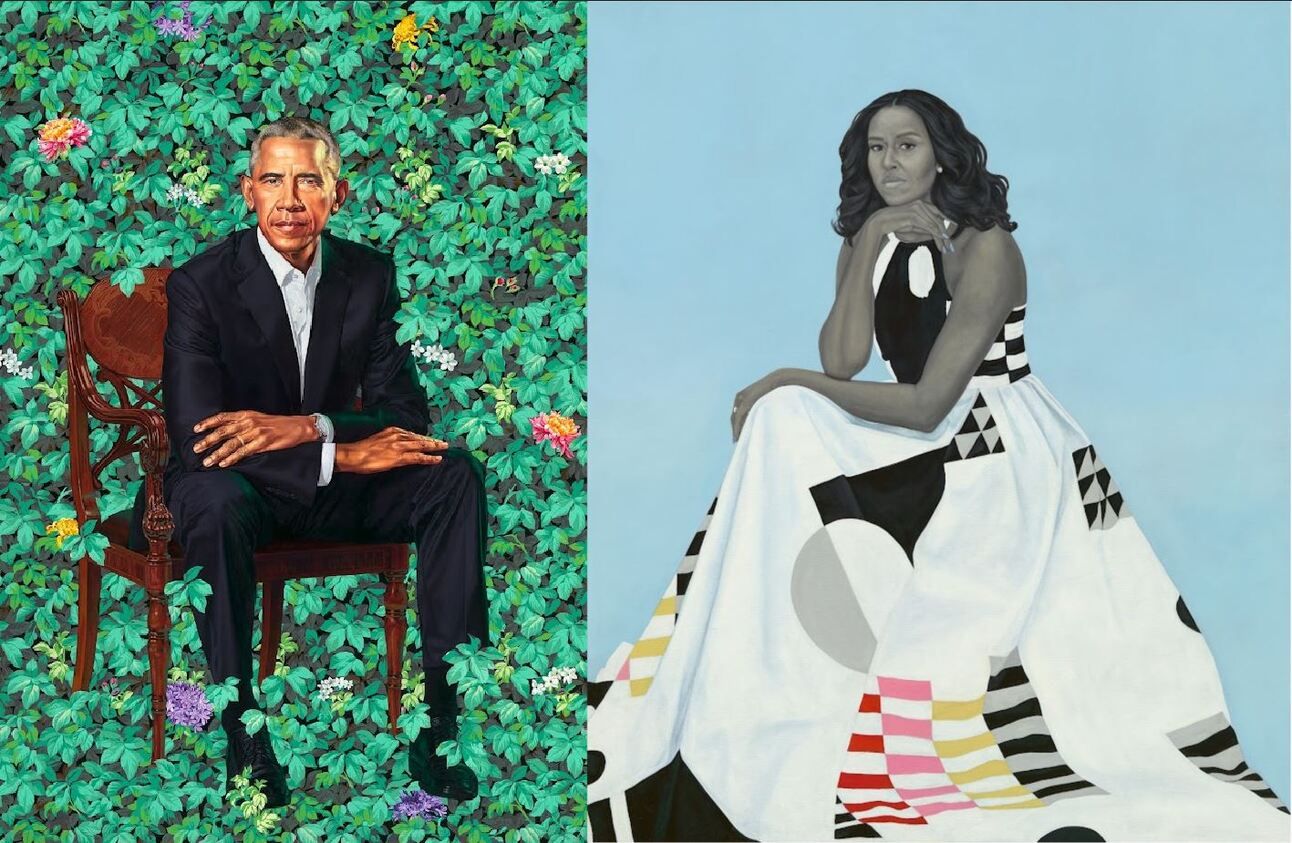
I never got a chance to meet the Obamas when they visited San Francisco, perhaps it was because my press credential had the words “Broke” and “Ass” in it, or because my campaign contribution was considered a ‘microtransaction’. Nevertheless, I got to see their likeness this week, as their presidential portraits are currently visiting the de Young in Golden Gate Park.
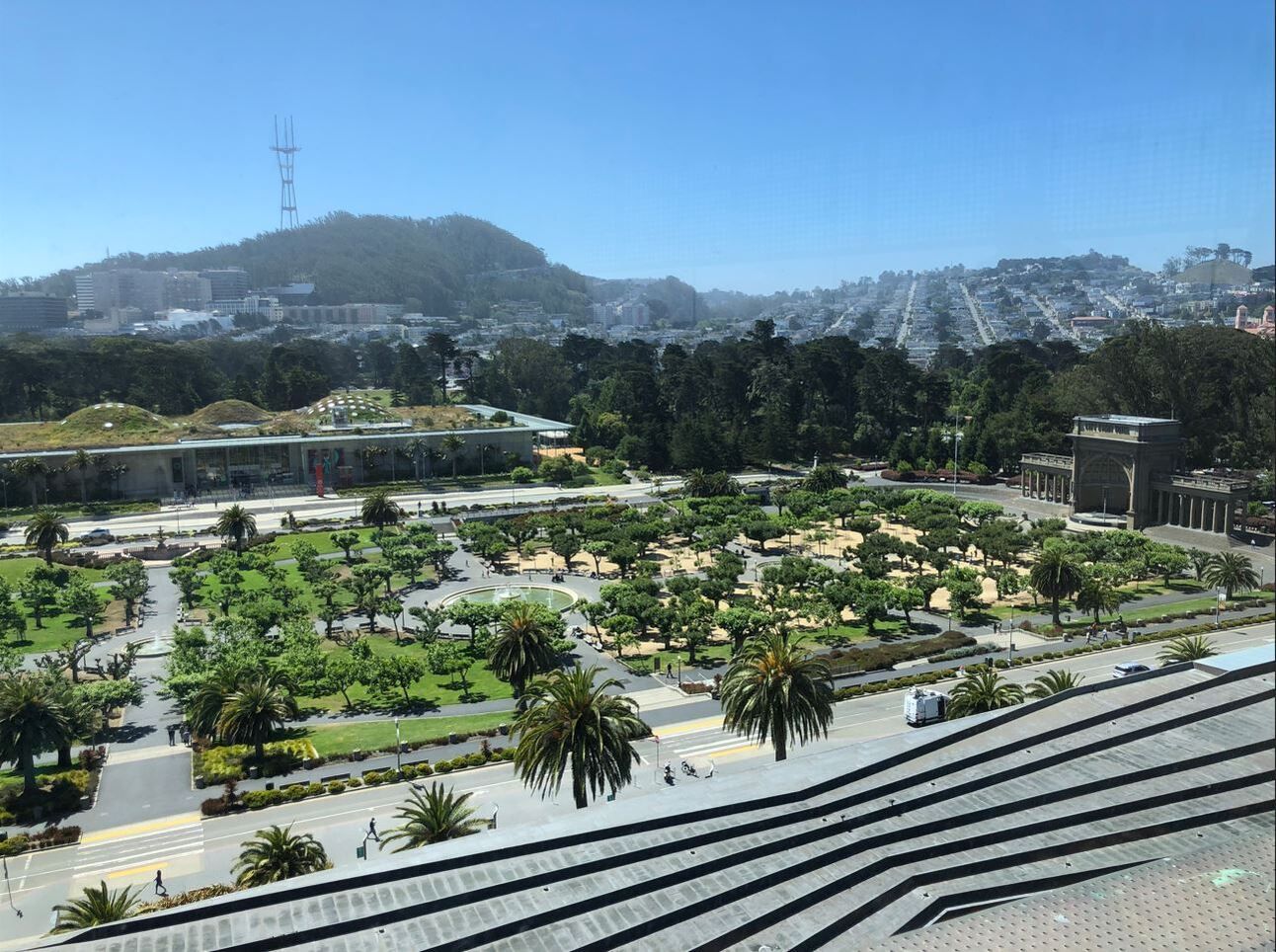
View from the de Young Museum observation deck. The view up there is as beautiful as anything hanging on the walls. Photo Alex Mak
You may have read one of the thousands of articles written on the Obama Presidential portraits when they were released back in 2018, they caused quite a stir. No President and First Lady had ever allowed their portrait artists so much freedom in design and composition as the Obamas. Just flip through the portraits of the preceding 44 Presidents, and you may notice a theme.
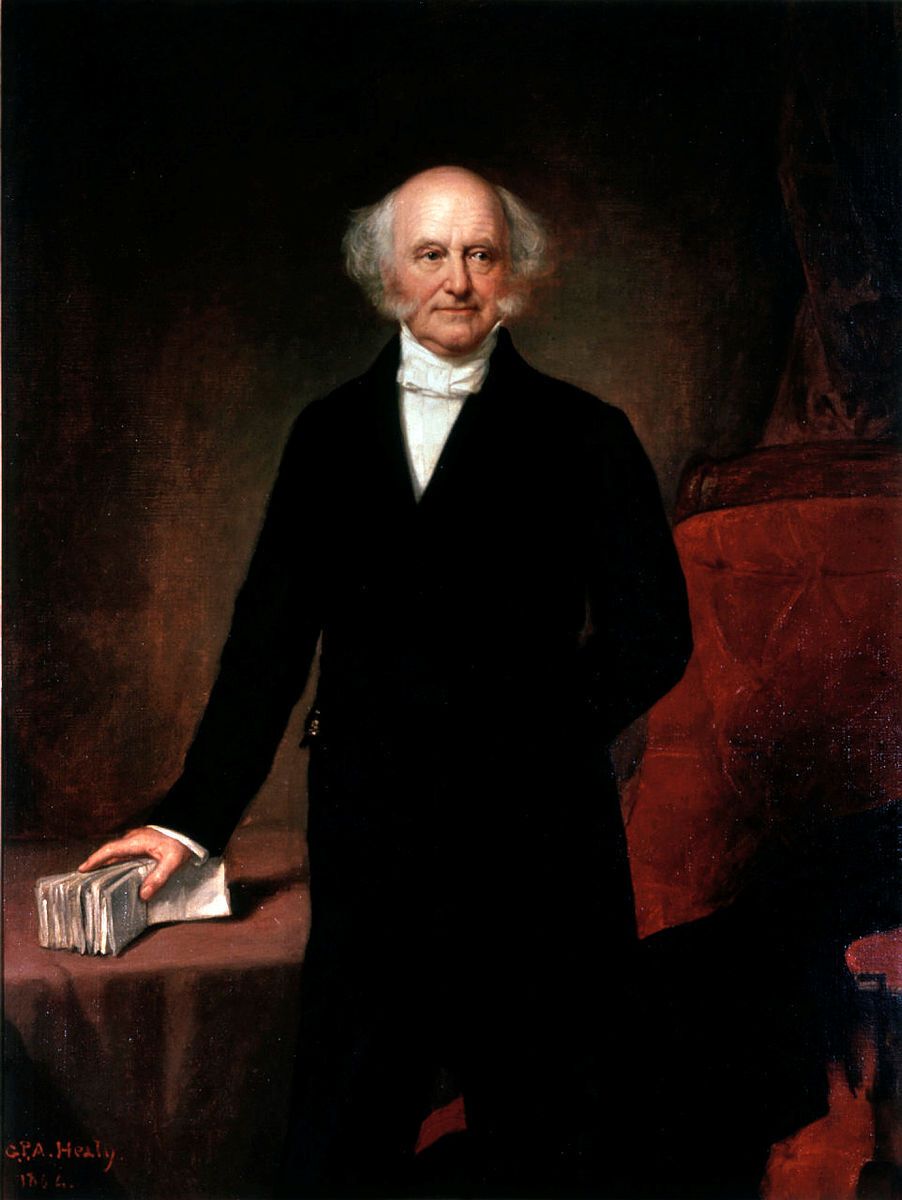
Martin Van Buren, 8th President of the United States, 1837-1841. One of the racier portaits. Portrait by George Peter Alexander Healy in 1858.
Every other Presidential portrait before Obama depicted a bust of an old white guy, wearing a tie, perhaps in front of a stack of papers or, maybe standing in front of a desk (if they felt really daring). There was a lengthy stream of a dozen or so Presidents that were slave owners, but that streak was broken after Lincoln, you may have heard.
Not ones to be discouraged by tradition, the Obamas chose artists who were not only the first Black presidential portrait artists, but who had distinct styles all their own, and were given the freedom to express it in their commissions.
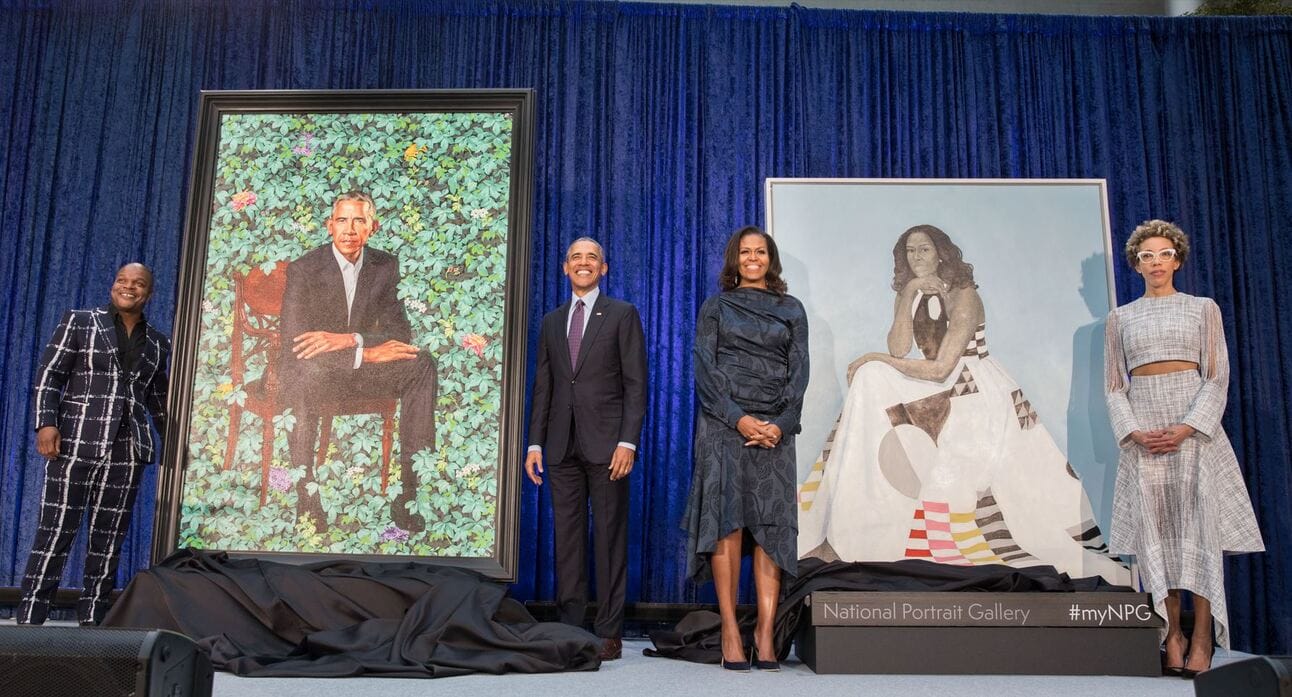
Portrait unveiling of former President Barack Obama and former First Lady Michelle Obama with their artists at the National Portrait Gallery in Washington, D.C., Feb. 12, 2018.Photo by Pete Souza.
Kehinde Wiley @kehindewiley
The phrase “ground-breaking” is one of the more overused adjectives in the art world, it’s the equivalent of saying something is “#disruptive” in the tech world. But in the case of Kehinde Wiley, it’s fitting, it’s fair to say that the style and grace of his work quite simply blew up what was expected from Whitehouse tradition.
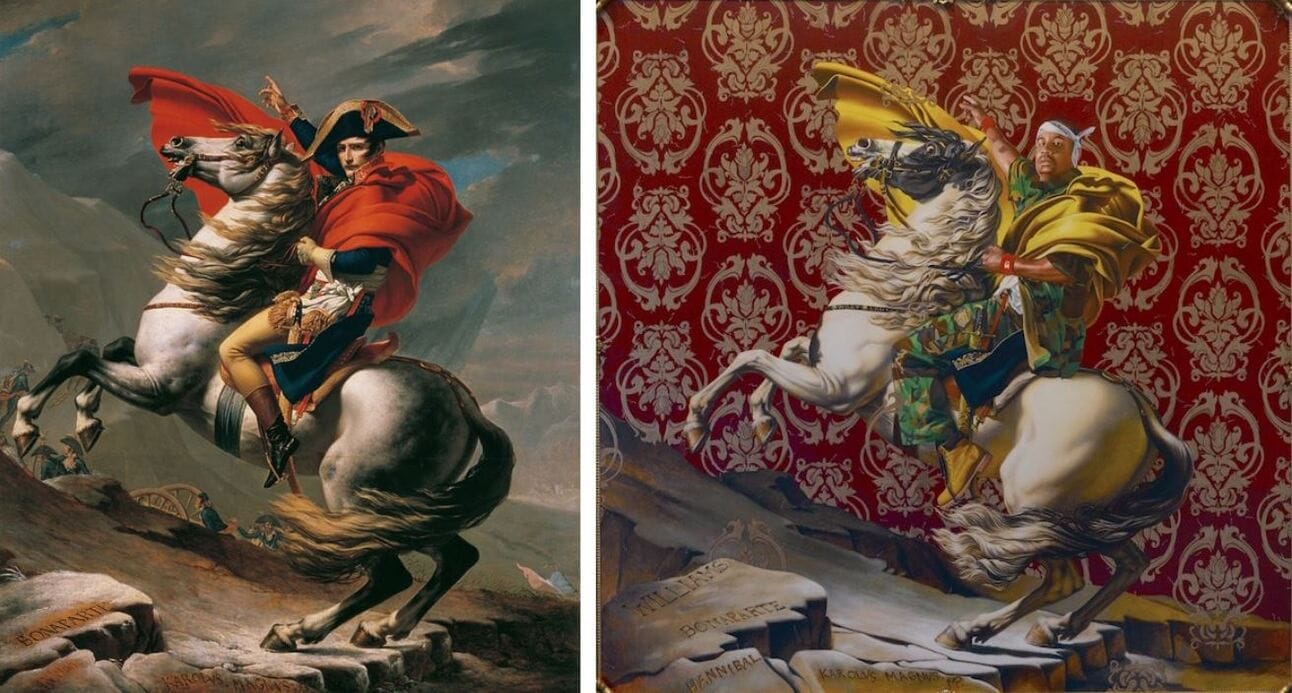
Left: Jacques-Louis David, Napoleon Crossing the Alps, 1803 version, oil on canvas 275 × 232 cm (Österreichische Galerie Belvedere); right: Kehinde Wiley, Napoleon Leading the Army over the Alps, 2005, oil paint on canvas, 274.3 x 274.3 cm (108 x 108 in) (Brooklyn Museum of Art, New York)
His portraits display modern figures in the context of classical and long famous works like Napoleon Crossing the Alps for example. Wiley calls it ‘street casting’, to put it simply, he puts people of color, his assistants, or people simply found in the neighborhood, into often iconic, baroque or renaissance, masterpieces that have exclusively depicted white Europeans.
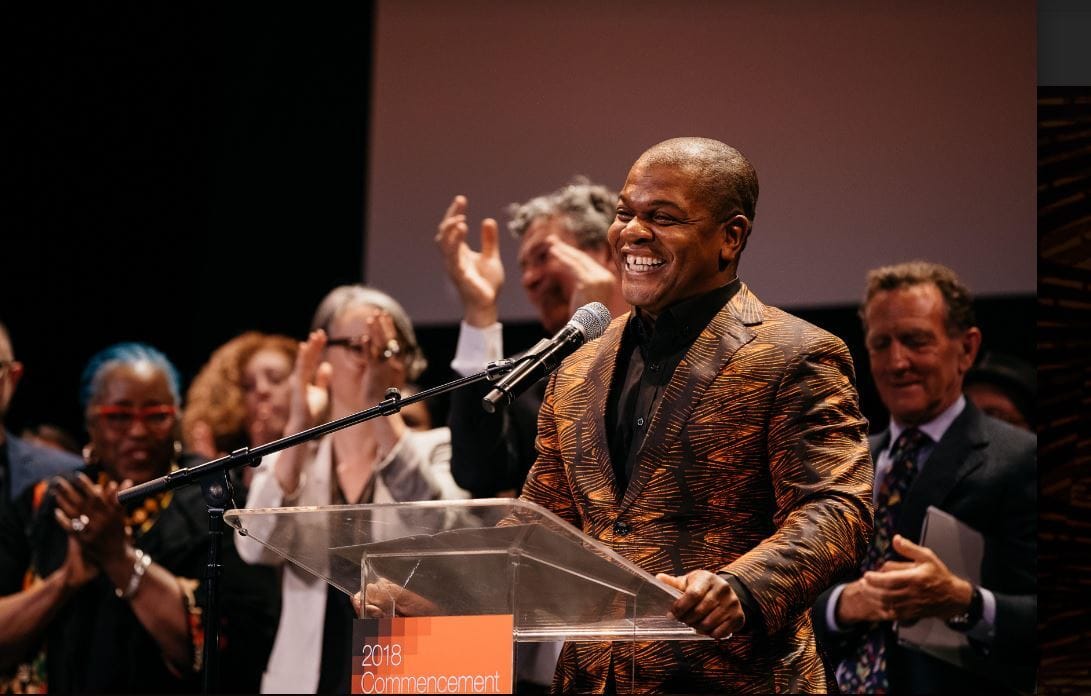
Kehinde Wiley in 2018 @ SFAI commencement. He is an alumni. Photo by @bryanandvita
A portrait, at the very least, needs to capture the subject’s likeness, Wiley typically takes the art several steps further.
He reminds us of what is contemporary, what is expression, and what has been missing, from art’s past; namely, color.
Barak Obama Presidential Portrait

President Barack Obama by Kehinde Wiley
Reportedly, Wiley wanted to depict Barrack on a horse, like Napoleon, but Obama went with a chair, like Lincoln. He is seated on an old 19th-century chair, leaning forward, on the edge of his seat, his knees higher than they should be, he has perhaps, outgrown that chair. A wall of ivy behind him seems to be engulfing him, as if he’s either receding into it, emerging from it, or being swallowed by it.
The flowers within the ivy all have symbolism. The purple African lily symbolizes his father’s Kenyan heritage; the white jasmine represents his Hawaiian birthplace and time spent in Indonesia; the multicolored chrysanthemum signifies Chicago, the city where Obama grew up and eventually became a state senator. There are small red rose flower buds, the rose being the official flower of Washington DC.
The portrait was done after Barack had left office, he’s taken off his tie and his flag pin, his hair is markedly greyer than it once was, he is poised, calm, confident, and he seems still, ready for anything.
Amy Sherald @asherald
Sherald focuses on African American cultural history and the representation of the African American body. She uses a grayscale to paint skin tones as a way of challenging the concept of color as race. She is well known for her depictions of Black women in particular, her most famous subject, you may have heard of:
Michelle Obama Portrait

Michelle Obama
Michele’s depiction couldn’t be more different than Barrack’s. She is painted with no background (other than blue), her colors are toned down, her gown is massive, it cascades downward and off the frame. Michelle appears perched on high, while Barack is sat on a chair seemingly too low for him.
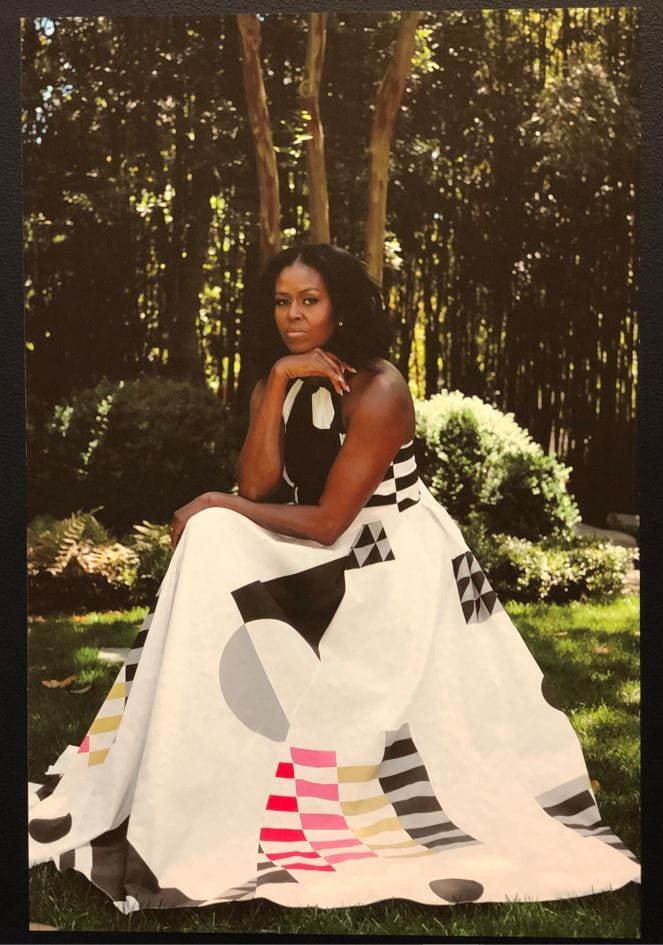
Mrs Obama posing for her portrait.
Mrs. Obama is wearing a Milly gown in white with geometric shapes that allude to the work of Dutch painter Piet Mondrian and the quilts of Gee’s Bend, the remote community of black artists and quilters in Alabama. Both Michelle and Amy, are Southern women.
The First Lady is contemplative, solid, confident, and wearing it.
You can find these wonderful portraits at the de Young museum in Golden Gate Park, all summer long, along with far more elaborate descriptions and background information. Senior Curator Timothy Anglin Burgard and his team at the de Young have done an excellent job, as one might expect.
The portraits are visiting from the National Portrait Gallery.
de Young museum / June 18 – August 14, 2022
You need a timed ticket to see The Obama Portraits Tour. Due to the popularity of this exhibition, we recommend booking online in advance.
On Saturdays, see The Obama Portraits Tour for free! The price will automatically adjust to $0 in your cart when you book your ticket.
Other free days include:
Opening weekend, June 18–19 (tickets are first come, first served; on-site only; limit four per family)
The first Tuesday of each month
The post The Obamas, in San Francisco appeared first on Broke-Ass Stuart's Website.









